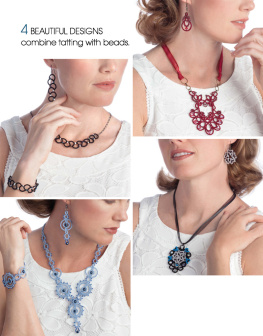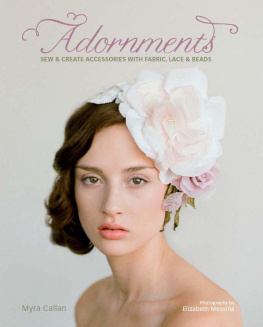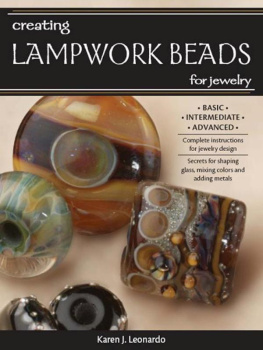There are many different brands of fuse beads available, the main ones being Hama in Europe and Perler in the US. These are both good quality and have consistent melting rates, meaning its usually possible to mix these brands if desired without too much trouble. However, the outcome is likely to be less reliable if you use some of the cheaper beads, as their melting rates are often inconsistent and the sizes of beads tend to vary. Other popular brands include Nabbi and Pyssla (available from Ikea).
Any type of fuse beads can be used for the designs in this book, just be sure to check which sized beads are required for each project.
Warning
If you are planning on letting the kids get creative with their designs, make sure they leave the ironing to an adult to avoid injury.

USING FUSE BEADS
Buying beads
Sizes Standard size fuse beads are 5mm in diameter and are termed Midi beads (Hama). These are the most common size of beads and are suitable from age five upwards. Its also possible to buy larger beads, which are around 10mm and although not used in this book, they are great for younger children. Finally, Mini beads (approx 2.5mm) are the smallest beads available and are suitable for 10 years and over. Its possible to get much more detail into smaller designs with these tiny beads.
Take note whether 2.5mm (Mini) or 5mm (Midi) beads are used for each project it makes a huge difference to the size of your finished piece (see image). Its possible to use the same charts in either Mini or Midi beads, but just take note of finished sizes.

This house design can be created using either Midi or Mini beads. (See for chart)
Colours Fuse beads come in an amazing array of colours, including solid, translucent, pastel, glitter and even glow-in-the-dark! Take a look at the website for your brand of beads and download a colour chart to see whats available. The charts in this book dont specify colour codes, as this will depend which type of beads you are using. Use colour charts to match and select the colours you need, or be inspired and choose your own.
When starting out with fuse beads, it makes sense to buy a big jar of mixed beads, as these are cheap and great for practising new ideas. However, as you try more challenging designs, such as those in this book, you will almost always end up having to sort the beads. Therefore its much easier and quicker to buy packs of individual coloured beads.
Equipment
Besides the beads themselves, one of the great things about fuse beads is that you need very little equipment.
Pegboards Flat plastic boards with tiny pegs that hold your beads in place while youre working them are available from many craft retailers. Different shaped boards are available, although in this book, all the charts are designed to work on the standard 29 x 29 (beads) interlocking pegboards, as they are the most versatile, allowing for any shape or size design. For the Mini fuse bead (2.5mm) designs, you will need a similar board, but with smaller pegs.

Tweezers Although not essential, you may find it easier and quicker in some instances to use tweezers for placing beads onto the pegboard. This is particularly true for Mini fuse beads (2.5mm). Longer tweezers with pointed ends are the most useful, allowing you to pick up beads from the edges, or by grabbing the centre hole.
TIP
Some designs use the holes in the beads to create/finish the project, so be sure to check before you go crazy with the iron and lose all your holes!
Iron and ironing paper You will need a standard clothes iron with variable heat settings to fuse/melt the individual beads together. Smaller compact or travel irons are ideal, as they are easy to hold and control. You will need ironing paper to cover your beads to prevent melting onto the iron. Specific paper for fuse beads is available, or alternatively, use greaseproof (wax) paper.

Creating a design
To create the designs in this book, simply add the corresponding colour beads to the pegboard following the chart supplied. Each square on the chart represents one bead on the board. For larger designs, it may help if you mark off the squares on the chart as you place your beads so you can keep track of where you are.
Ironing
Place ironing paper over your finished design on the pegboard, ensuring all the beads are completely covered.
Set your iron to the required heat setting (low/medium for Mini fuse beads 2.5mm, high for Midi fuse beads 5mm) and when it reaches the required temperature, iron the paper while keeping the iron level. Let the iron do the work its not necessary to apply additional pressure working evenly over the design. As the beads start to melt, they will appear darker through the paper, which means they are ready. Ensure you have ironed all the beads, paying particular attention to the edges or any areas that are only attached by one bead to make sure they are well fused.
Carefully peel off one edge of the paper to check that all the beads have been fused. If any beads have been missed, lay the paper back down and apply further heat to those areas. Lift the paper off to reveal the fused design.
Flip the pegboard over onto a heatproof surface and (optionally) repeat the process to fuse the reverse of the design (see ).
After ironing, the beads will remain hot for a short while, so be careful when handling. Place a flat heavy object, such as a book, onto your design while its cooling to ensure it remains flat (alternatively, to shape your design see ).
Ironing choices
You have a couple of choices when ironing designs, which really come down to personal preference of the look you favour, or what type of project is being created.















